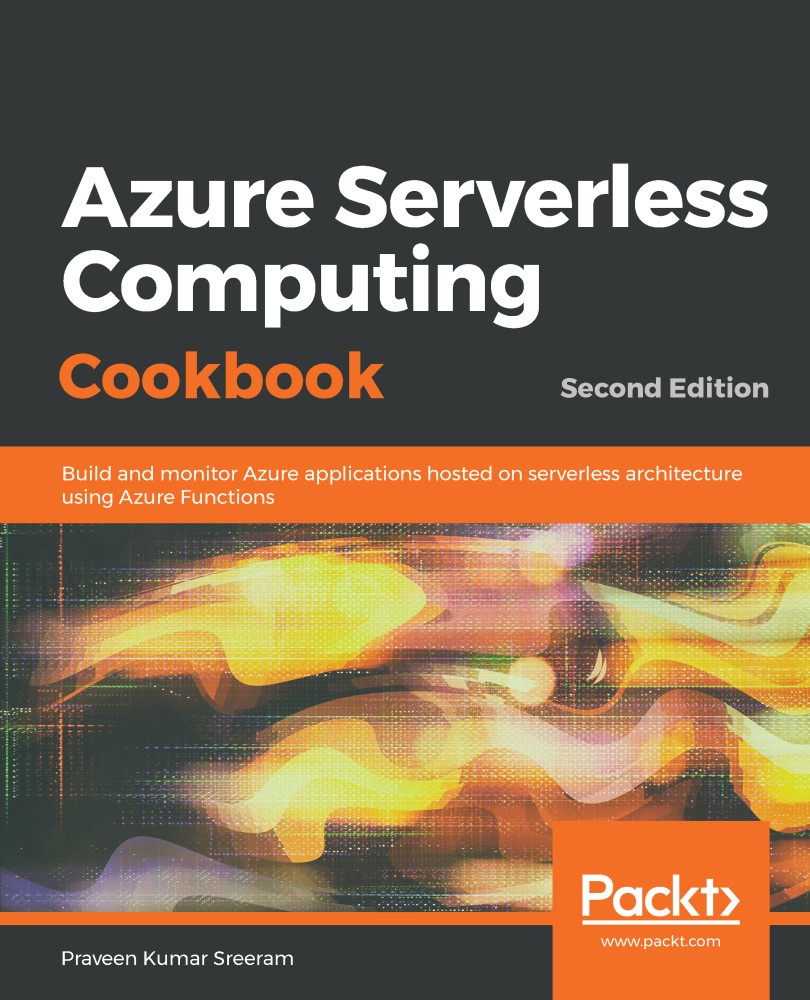In one of the previous recipes, Connecting to the Azure Storage cloud from the local Visual Studio environment, you learned how to connect the cloud storage account from the local code. In this recipe, you will learn how to debug the live code running in the Azure Cloud environment. We will be performing the following steps in the BlobTriggerCSharp function of the FunctionAppinVisualStudio function app:
- Changing the path of the container in the Azure Management portal to that of the new container
- Opening the function app in Visual Studio 2017
- Attaching the debugger from within Visual Studio 2017 to the required Azure Function
- Creating a Blob in the new storage container
- Debugging the application after the breakpoints are hit


